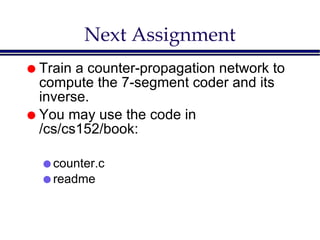The document discusses various types of Hebbian learning including:
1) Unsupervised Hebbian learning where weights are strengthened based on actual neural responses to stimuli without a target output.
2) Supervised Hebbian learning where weights are strengthened based on the desired neural response rather than the actual response to better approximate a target output.
3) Recognition networks like the instar rule which only updates weights when a neuron's output is active to recognize specific input patterns.




















































